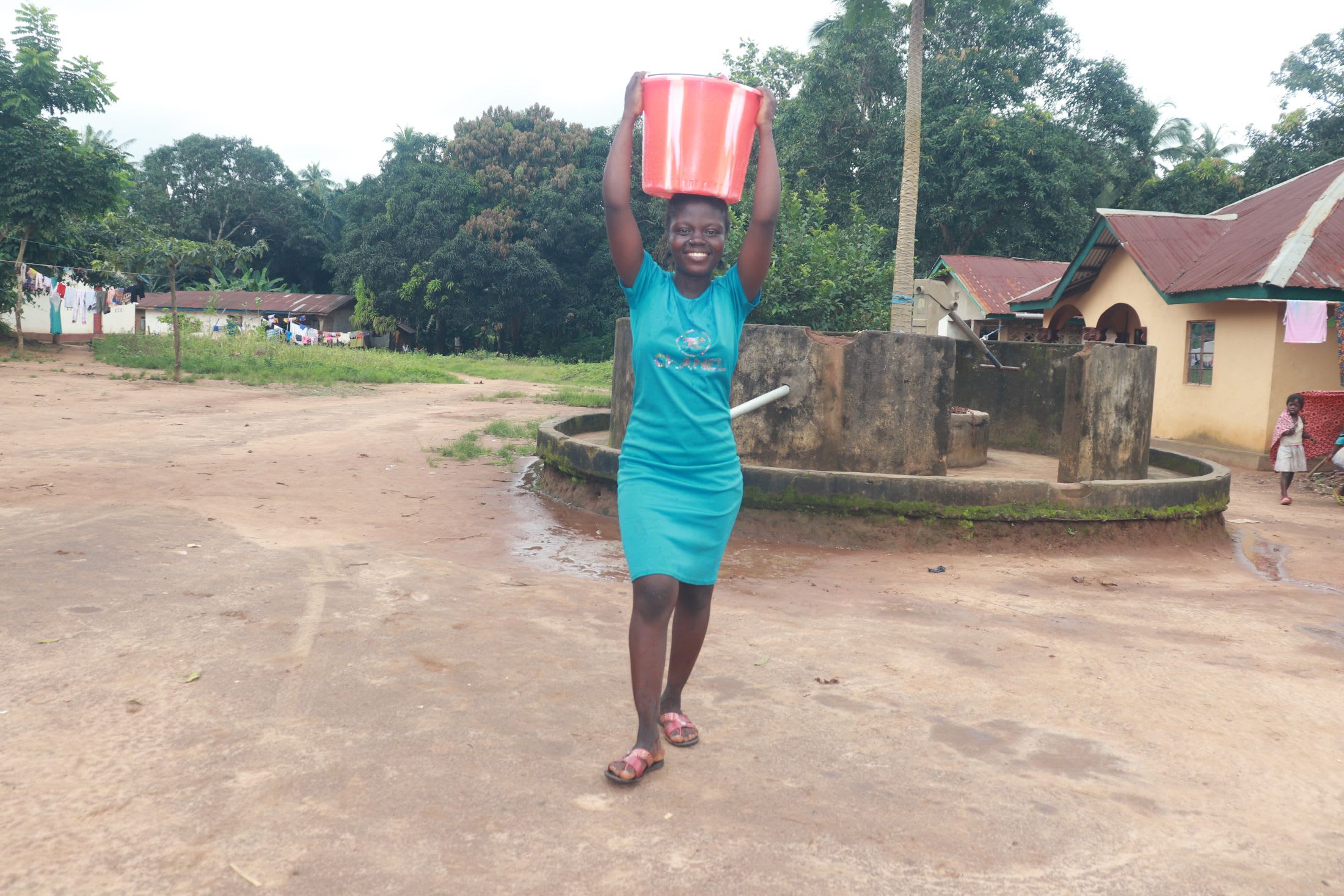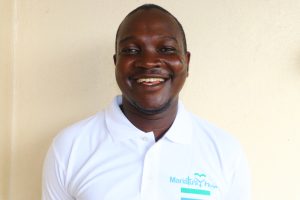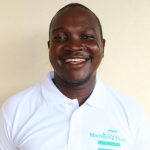The Mamankie Community has 238 residents who live on the outskirts of the village, which means they struggle for clean, accessible water daily. There is a well nearby, but it's extremely seasonal and in need of repair. The only other option is a distant well, which requires an arduous process to collect the water they need, especially since the well is overcrowded.

A community member makes the bone-tiring journey home with water.
Fifteen-year-old Mariatu lives this difficult reality every day.
She shared, "The distance is the reason why fetching water always takes so long. I always spend so much time on the way to the water source. Also, at the water source, I spend so much time due to the crowd. As a result of the crowd, the water is rationed; hence, [this] makes fetching water take so long. In the dry season, I always go out of the community to fetch water, especially when the waterpoint that is around the community dries up."

Mariatu.
Like many young girls in Sierra Leone, Mariatu fetches water to meet her family's needs. The time consumed by trekking to the well and waiting for her turn to collect water makes it difficult to prioritize anything else in her life.
"The scarcity of water in the school negatively impacts my time at school, and thus [this] brings my poor performance. I [do] not have time to read my notes if there is no water at home. I have to go and fetch water first before reading my notes. Sometimes, I may not even be able to read or even go to school on time due to the unavailability of water within the community, especially in the dry season," she shared.
Water scarcity within the community has many devastating effects, including a break in community unity.
"The long walking distance always makes the water users become tired after fetching water. This is because the distance to the water source is far away from the community. Another negative consequence of using these sources is fighting among the water users. They always fight at the water source to fetch water, and that always brings hatred amongst them," shared Field Officer Alimamy Lamin Kanu.
As you can imagine, the tiring distance, overcrowding, and tension make collecting water a task that Mariatu dreads.

Mariatu.
"I always feel unhappy when I am sent to go and fetch water," she shared.
The Mamankie Community residents need a solution to resolve their water crisis and assuage their tensions. Rehabilitating their well can do both of those things! With a reliable and nearby waterpoint, Mariatu won't spend all her time waiting and hoping for water. She will easily be able to collect what she needs, hopefully making more time for her education—the learning time she needs to achieve her goals.

With a passion for her community and a drive to make a better future, Mariatu's potential is limitless. With accessible water, her goals are within sight. "My plan for the future is to be a community role model. I want to be a leader in this community, so I will watch over my people," Mariatu concluded.
Steps Toward a Solution
Our technical experts worked with the local community to identify the most effective solution to their water crisis. They decided to drill a borehole well, construct a platform for the well, and attach a hand pump.
Well
Abundant water often lies just beneath our feet. Aquifers—natural underground rivers—flow through layers of sediment and rock, offering a constant supply of safe water. A borehole well is drilled deep into the earth to access this naturally filtered and protected water. We penetrate meters, sometimes even hundreds of meters, of soil, silt, rock, and more to reach the water underground. Once found, we construct a platform for the well and attach a hand pump. The community gains a safe, enclosed water source capable of providing approximately five gallons of water per minute. Learn more here!
Community Education & Ownership
Hygiene and sanitation training are integral to our water projects. Training is tailored to each community's specific needs and includes key topics such as proper water handling, improved hygiene practices, disease transmission prevention, and care of the new water point. Safe water and improved hygiene habits foster a healthier future for everyone in the community. Encouraged and supported by the guidance of our team, a water user committee representative of the community's diverse members assumes responsibility for maintaining the water point, often gathering fees to ensure its upkeep.

 Borehole Well and Hand Pump
Borehole Well and Hand Pump

















